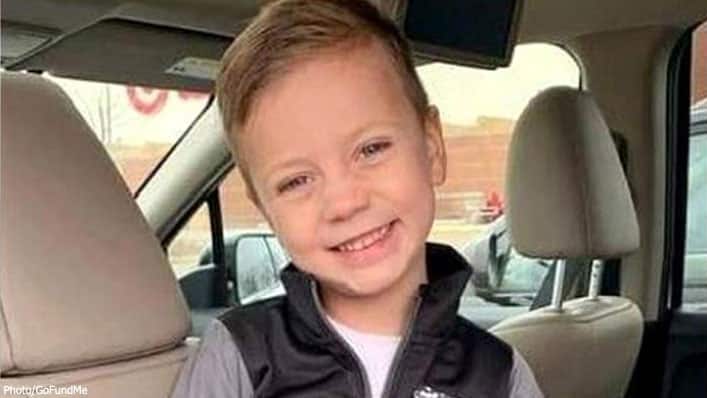A man called Aranda approached the little boy’s mom at a group at the mall on the 12 of April 2019. Landen mom asked him if they were in his way and should move. Without hesitation or warning the stranger picked up Landen and threw him from the balcony at the Mall of America.
Surprisingly, this isn’t the first time 24-year-old has committed crimes at the mall. Aranda has two prior assault convictions from 2015 and was apparently banned from the the Mall of America for a period of time. He was also instructed to undergo psychological evaluation following those earlier attacks.
Later that day Aranda admitted to throwing the boy off the balcony to Police after they captured on a light rail train leaving the mall. He also told the police that he had attempted to kill somebody the day before (preferably an adult), but it didn’t “work out.”
He is being held in Hennepin County Jail in lieu of $2million bail and is scheduled to appear in court on May 14.
The suspect’s uncle, Francis Aranda, told KSTP that his nephew had displayed violent tendencies since childhood.
‘He has a serious mental problem, he was diagnosed as a child,’ the relative said.
He added: ‘We are going to pray for that baby [Landen] because what happened is so unfortunate, but it’s going to bring light to mental illness, I hope he [Aranda] doesn’t go to jail, he needs help.’

In spite of being thrown off a balcony that could have killed him, doctors have reported that Landen is thankfully doing much better than expected to the point where even the medical staff are chalking it up to nothing but a “miracle.”
This is truly a miracle. It’s like he fell off a bicycle instead of off the third floor of the mall.”
Mac Hammon, the pastor of the family’s church, was contacted by Landen’s grandpa on Sunday during the Easter sermon.
The results were obtained after a 5-hour MRI. “Doctors said they found no brain damage – not even any swelling,” Hammond told church congregants on Easter. “No spinal damage, no nerve damage ”¦ doctors are saying it is truly a miracle.”
Mac Hammon, shared that the boy did suffer many broken bones, including fractures on his arm, leg, and face. He will also need to have his spleen removed.
The GoFundMe page set up for Landen posted this encouraging update a week after the incident:
“The power of prayer is simply amazing. We all have been extremely humbled by the outpouring of support and prayers from everyone. Thank you for showing us there is so much good not only in our community but across the globe. Condition is again similar to previous days, another peaceful night of sleep — small steps towards the healing process. Each new day is a good day. Landen’s recovery is expected to be ongoing for a long time, while it’s hard to estimate costs, this will change everything for their family and require much of their time and focus.”
Over 27,000 people have donated to a GoFundMe campaign that has raised more than $961,000 as of Tuesday morning.
Mental Health Facts, Stats, and Data
- Over 44 million American adults have a mental health condition. Since the release of the first State of Mental Health in America report (2015), there has only been a slight decrease in the number of adults who have a mental health condition (from 18.19% to 18.07%)
- Rate of youth experiencing a mental health condition continues to rise. The rate of youth with Major Depressive Episode (MDE) increased from 11.93% to 12.63%. There was only a 1.5% decrease in the rate of youth with MDE who did receive treatment. Data showed that 62% of youth with MDE received no treatment.
- More Americans are insured and accessing care. We can continue to see the effects of healthcare reform on the rate of Adults who are uninsured. This year there was a 2.5% reduction in the number of Adults with a mental health condition who were uninsured.
- …But many Americans experiencing a mental health condition still report having an unmet need. 1 in 5, or 9 million adults reported having an unmet need.
- Mental health workforce shortage remains. Many states saw some improvement in their individual to mental health provider ratio. But in states with the lowest workforce there was almost 4 times the number individuals to only 1 mental health provider.





